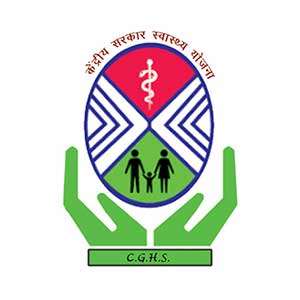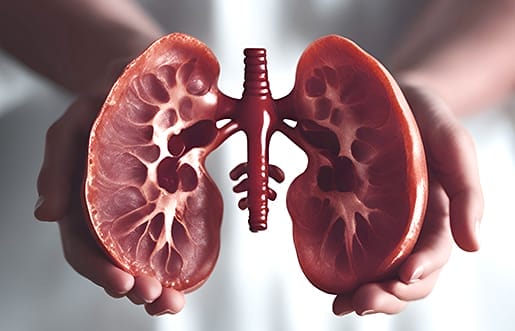On Panel

ECHS
For Indian Patients :

All major Insurance Covered
You are Patient Number
For Today
CGHS

Coming Soon
What is Polycystic Kidney Disease?
Polycystic kidney disease is mostly a genetic disorder associated with the occurrence of sac-like membranes over the kidneys. The instances of fluid-filled cysts on the kidneys result in the increased size. It can even cause the death of the patient if kidney cysts are not treated in their early stages.
Doctors say that this disorder is the 4th principal cause of kidney failure. PKD is a pervasive disorder that occurs in the kidney, but in some cases, you may also have cysts on the other organs as well, such as liver, pancreas, spleen, ovaries, and large bowel also. It also seen in some cases those cysts never give any complications to the patients.
Book Free Consultation
Types of Polycystic Kidney Disease
The two main types of PKD include:
Autosomal Dominant Polycystic Kidney Disease
It is the most common type of PKD, resulting in the loss of kidney function in people of age between 30 and 50. Autosomal dominant PKD influences 1 in every 400 to 800 people, since it gets passed down through the family lines. Often called adult PKD, the signs and symptoms of such conditions appear late in life. It is why a healthcare provider is not able to diagnose ADPKD in its early appearance. Besides, the gene mutation you get arises from one parent only. But two different gene mutations can manifest ADPKD, known to be PKD1 and PKD2 gene.
It is possible to diagnose PKD1 as soon as the signs appear in a lifetime. But there are more chances of individuals with PKD1 to progress more quickly to renal failure than those with PKD2.
Autosomal Recessive Polycystic Kidney Disease
It is a rare genetic disorder affecting 1 in every 20,000 children. A baby or a fetus with this problem may have thousands of waste-filled kidney cysts that make the renal to appear larger than its size. Even before birth or in the womb, the child may have reduced kidney function. Since the signs appear early in the first few years of life, it is also called infantile PKD. Compromised kidney function may threaten the life of the baby as this also affects their breathing capacity.
The meaning of “autosomal recessive PKD,” means that for the child to have this disorder, the mutations in the genes must be involved in both the parents. If one parent has the required gene, the child may not have this disorder, but will only become a carrier so that he can pass the genes to the coming generation. Around one-third of infants with this condition die within the first few days of their life. However, if they survive the struggling time, there a good chance of survival into adulthood.
Acquired Polycystic Kidney Treatment in Ayurveda
This disorder happens to the patient who suffers from kidney damage from a long time, or severe infection is there in the kidneys. This disorder is directly associated with the dialysis and transplant and not with the genes. It is the worst type of stage that the patient deals with. The main symptom of this disorder is the change color of the urine to red color or blood in the urine.
Signs and symptoms of Polycystic Kidney Disease
According to medical researchers, a cyst growing on the surface of kidneys in about 0.5 inches for an extended period is known as Polycystic Kidney Disease. It is a genetic disorder that may have inherited from biological parents. Treating the signs and symptoms of polycystic kidney disease can prevent a lot of damage.
The signs and symptoms of ADPKD include high blood pressure, Colon problems, and even kidney failure.
You may also notice:
- Back or side pain: The pain arises when you move around or stretch the body
- Headache: Headache is common in people as the brain is not able to receive the required amount of oxygen accordingly
- Blood in your urine: Hematuria also occurs during the development of cysts
- Kidney stones: Stones may appear in the kidneys because the kidneys cannot function properly
- Urinary tract or kidney infections: UTIs and kidney infections are common during PKD
- Colon problems: Tenderness in the wall of the colon
In a rare case, the patient may not notice any sign until the kidney cyst is around half inches larger.
The signs of ARPKD include the increased size of the kidneys than the average size of the baby himself. If the size goes on increasing, the baby may have growth failure. In some cases, a doctor does not notice any physical inability in childhood or even adulthood.
A woman with an increased risk of PKD must get parental care as soon as she knows that she has conceived.
The early signs that appear with ARPKD include:
- Enlarged size of the kidneys: An increase in the size of kidneys can pressurize the lungs of the child and create some breathing-related complications. With the help of the ultrasound, the healthcare provider can check the size of the kidneys.
- Low levels of amniotic fluid: The decreased size of the kidneys also results in a low amniotic fluid level in the body. Since amniotic fluid facilitates the growth of the baby, its low amount may create various complications for the baby.
- Growth failure: A baby with ARPKD may have decreased kidney and lung function leading to a smaller body size than normal.
What are the Ways to Diagnose Cysts on the Kidneys?
To diagnose PKD, the healthcare provider usually goes for genetic and imaging testing. The genetic testing is a way to determine your family history of PKD. The sooner you can diagnose PKD, the sooner you can start the treatment.
Imaging tests
Imaging testing is a way to check the size of the kidneys. The radiologist reads the image of the kidneys and examines the presence of the kidney cysts.
- Ultrasound: To create the internal image of the kidney’s structure
- Computed tomography: To get the image of the urinary tract
- Magnetic resonance imaging: To get the detailed view of the tissues of the kidneys
Polycystic Kidney Disease Treatment in Ayurveda
The Ayurvedic treatment for Polycystic Kidney Disease is all about using herbal medications and adopting some yoga stances to improve the kidney function. Ayurveda is a natural way to revive the damage to the cells and tissues of the kidneys. The mutation in the genes also gets altered when you consume Ayurvedic medicine for Polycystic Kidney Disease for a specific period.
Since PKD is a hereditary condition, the use of herbs can help work on the genes and the ancestral pattern so that you can be prevented from passing the disease to your child.
So, if you want to get treatment for polycystic kidney disease naturally, there is no better choice than Ayurveda!
Ayurveda also suggests patients some preventive measures that may include:
- Herbal tea works best in the natural remedies for polycystic kidney disease in the patients.
- Garlic is the best thing to consume if you are suffering from PKD. It reduces the oxidative stress and helps in reducing the size of the cysts in the kidney
- A patient must consume fresh fruits and vegetables during the ayurvedic treatment for polycystic kidney disease
- The fiber content in the diet must be increased to keep the kidney free from cysts and other infections
- A patient must limit the amount of fat in the diet
- Food products rich in Vitamin D works best in the polycystic kidney disease ayurvedic treatment
- Spinach, beets, eggplants must be avoided
Frequently Asked Questions
-
How does Ayurveda address the root cause of PKD?
The most natural and secure method of preserving or reviving kidney function is through Ayurvedic treatment. Dietary and lifestyle modifications are important. Ayurvedic medicines function at the cellular level, while their focus is on treating the underlying cause of the illness.
-
Are there any side effects of Ayurvedic treatments for PKD?
Ayurvedic drugs can be used to treat a variety of illnesses as well as to enhance immunity and promote general well-being. Most people can safely use them because they have little to no negative effects.
-
How long does Ayurvedic treatment for PKD take?
Ayurvedic therapies provide a thorough all-natural method to enhance kidney function. The length of time is established by the severity and degree of the sickness that has been attained.
-
Can PKD be managed without surgery?
PKD can cause a lot of complications if not treated on time. It’s treatment can be complemented with ayurvedic medicines as they do not have any kind of side effects on the body. The ayurvedic treatment plans provide you with the best of recovery and health.
-
Are there any alternative therapies for PKD?
Ayurveda can make use of customised treatment plans to provide you with the best of results. Ayurvedic therapies like Pancchakarma are helpful. Also, based on complexities, the ayurvedic kidney experts can plan the therapies accordingly.
-
What is the impact of PKD on pregnancy?
Pregnant women with PKD who have normal blood pressure and kidney function typically give birth to healthy babies without incident.
-
Are there any specific yoga & exercises for PKD patients?
Select a continuous exercise like aerobic dance, walking, cycling, skiing, or any other sport that requires you to move your big muscles all the time. Include some low-level strengthening workouts in your programme as well.
-
How does Ayurveda customise treatment for PKD patients?
The ayurvedic doctors will run a diagnosis initially and will help with panning the best ayurvedic treatment plan. Depending on the dosha imbalance identified or any other underlying disease, the type of treatment will be set.

